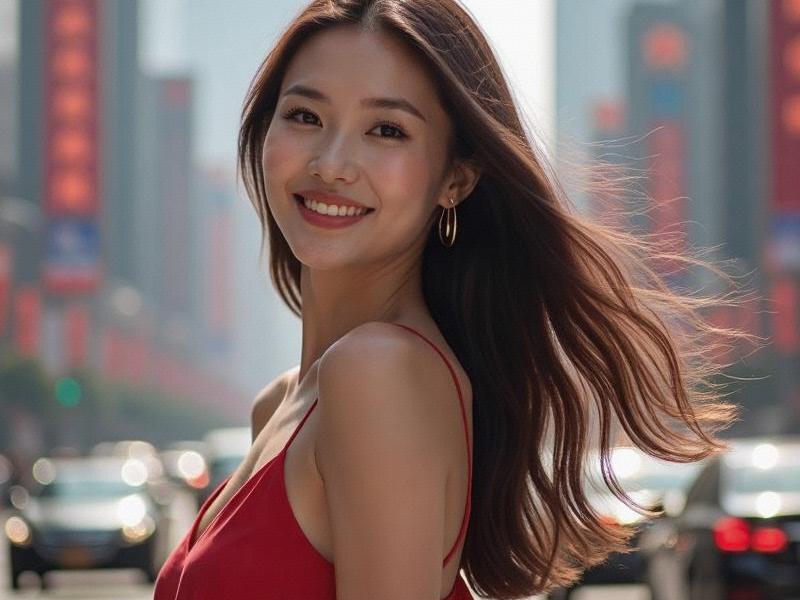Shanghai Style Renaissance: How the City's Women Are Redefining Chinese Beauty Standards in the Global Era
⏱ 2025-05-24 00:34 🔖 爱上海419论坛
📢0℃

In the gleaming shopping districts of Nanjing Road and Xintiandi, a quiet revolution in Chinese beauty standards is unfolding. Shanghai's women - long considered the nation's style vanguards - are pioneering a new paradigm of modern Chinese femininity that reconciles traditional values with global cosmopolitanism.
The numbers tell a compelling story: Shanghai now accounts for 28% of China's premium cosmetics market, with local women spending an average of ¥5,800 annually on beauty products - 73% higher than the national average. But beyond the statistics lies a more profound cultural transformation. "Shanghai girls have always been trendsetters," explains Dr. Li Wenjing, cultural anthropologist at Fudan University. "What's different now is how they're synthesizing multiple influences into something distinctly Shanghainese yet globally relevant."
上海贵族宝贝sh1314 This synthesis manifests in fascinating ways. The current "Jade Skin Revival" movement sees young Shanghainese women combining French skincare science with traditional Chinese medicine principles, creating customized regimens at boutique clinics like The Face Code in Jing'an District. Meanwhile, local makeup artists have developed the "Shanghai Glow" technique - a fusion of Korean dewy foundation application with the precise eyeliner work of 1930s Shanghai calendar girls.
Fashion reflects this hybrid identity. On the streets of the Former French Concession, it's common to see women pair qipao-inspired dresses from local designer Uma Wang with Italian leather accessories, or mix vintage Mao jacket elements with contemporary streetwear. "Our clients want pieces that tell a Shanghai story," says designer Helen Lee, whose Huaihai Road boutique caters to this new aesthetic. "It's not about choosing between Chinese and Western - it's about creating something that couldn't exist anywhere else."
上海品茶工作室
The economic impact is staggering. Shanghai's beauty industry grew 22% last year, driven by homegrown brands like Pechoin and Herborist that now compete with international giants. The city hosts China's largest cosmetic R&D center, where scientists develop products specifically for Asian skin types. Social commerce platforms like Xiaohongshu (Little Red Book), founded in Shanghai, have become global case studies in beauty marketing, with local influencers like "Shanghai Sally" commanding six-figure fees for product placements.
上海娱乐联盟 Cultural commentators note this movement represents more than consumerism. "It's about asserting a confident, contemporary Chinese femininity," says author Mei Fong. "Shanghai women are rewriting the rules - they might get eyelash extensions but will quote Confucius in the next breath." This duality permeates the city's beauty culture, where high-tech dermatology clinics coexist with traditional face-reading specialists, and where young professionals equally fluent in discussing French luxury brands and Tang Dynasty poetry.
Challenges persist, particularly regarding sustainability and inclusivity. The prevalence of skin-whitening products (still 42% of Shanghai's cosmetic market) sparks ongoing debates, while plus-size fashion remains underrepresented. However, change is emerging - local brands like ICICLE now feature diverse models, and vegan beauty stores are proliferating in the Former French Concession.
As Shanghai prepares to host the 2026 World Beauty Expo, its women continue crafting a unique style language that resonates globally. From the skincare labs of Pudong to the fashion studios of M50, a new standard of beauty is emerging - one that honors heritage while embracing innovation, proving that in 21st-century Shanghai, glamour and substance are no longer mutually exclusive.
Shanghai Chronicles: A Journey Through the Heart of China's Modern MetropolisShanghai 2040: The Phoenix City Reinventing Urban Civilization"The Shanghai Sheen: How China's Cosmopolitan Women Are Reshaping Urban Identity"格式
5. 内容要求:
- 1500-4000字中文长文
- 需包含历史维度、当代案例、文化分析
- 可融入2025年最新社会现象
6. 表达尺度:
- 避免物化描写
- 强调文化符号和社会价值
7. 创作方向:
- 建议从海派文化、女性发展、审美变迁等角度切入
Shanghai 2040: The Blueprint for Humanity's Urban FutureExploring the Vibrant City of Shanghai and Its Surrounding AreasNeon Renaissance: How Shanghai's Clubs Became Global Cultural Hubs【潮涌东海】上海与杭州:高铁一小时里的千年文化对话Shanghai and Its Surroundings: A Comprehensive OverviewThe Velvet Revolution: Shanghai's High-End Entertainment Venues Redefining Urban Nightlife

